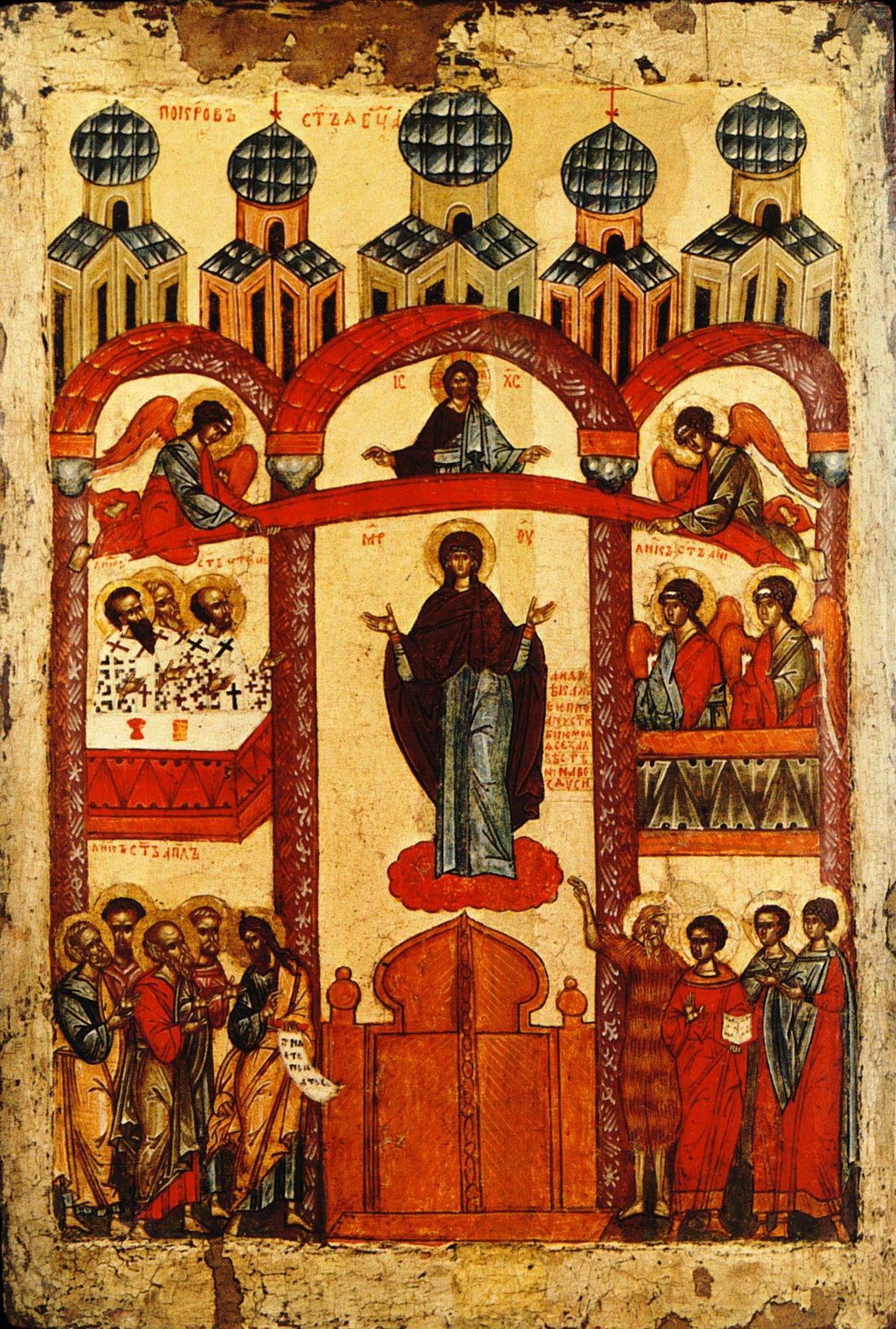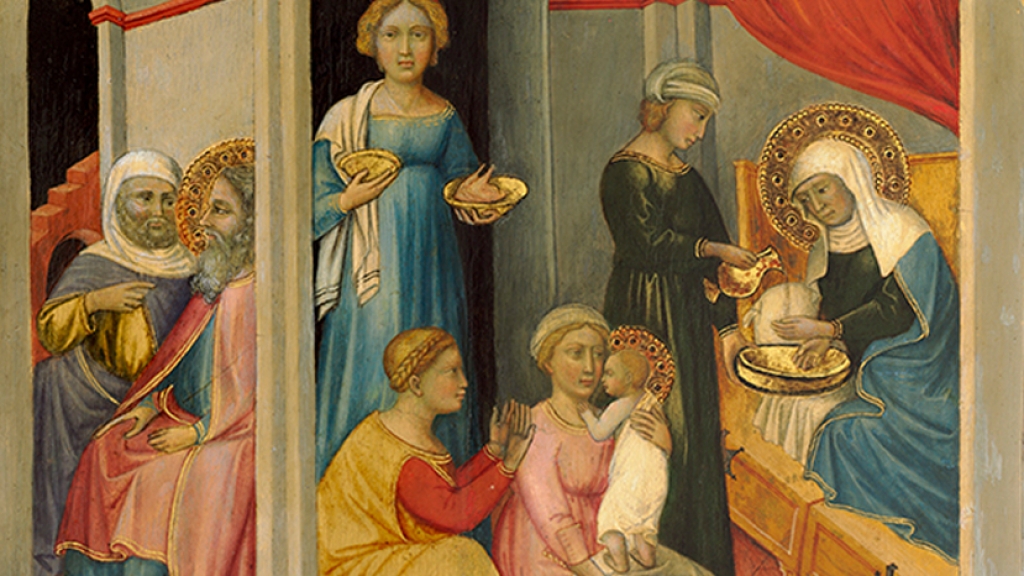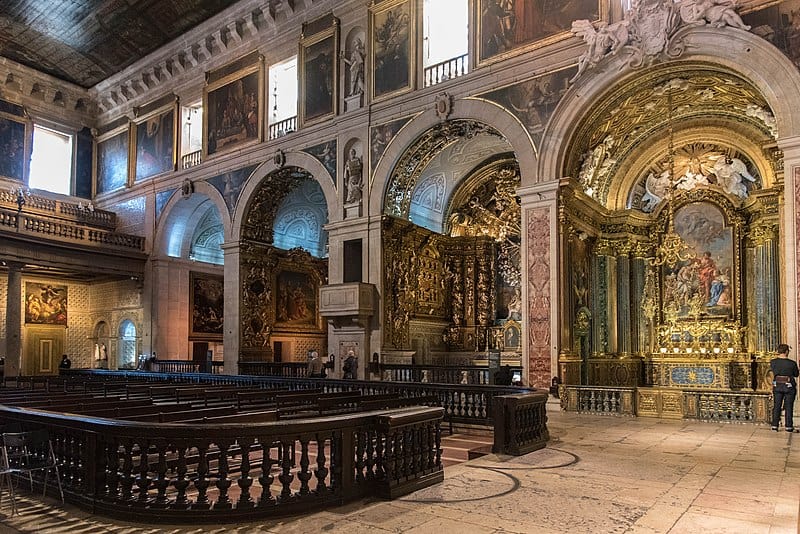
A medieval icon of the Protecting Veil of the Mother of God from Novgorod, currently in Moscow.
The Protecting Veil (or more simply, the Protection) of the Mother of God is one of the most popular festivals of the Slavic churches. Known as “Pokrov,” is celebrated on October 1. It commemorates a 10th century vision at the Blachernae church in Constantinople where several of her relics (her robe, veil, and part of her belt) were kept. On Sunday, October 1 at four in the morning, St. Andrew the Blessed Fool-for-Christ, who was a Slav by birth, saw the dome of the church open and the Virgin Mary enter, moving in the air above him, glowing and surrounded by angels and saints. She knelt and prayed with tears for all faithful Christians in the world. The Virgin Mary asked Her Son, Jesus Christ, to accept the prayers of all the people entreating Him and looking for Her protection. Once Her prayer was completed, she walked to the altar and continued to pray. Afterwards, she spread Her veil over all the people in the church as a protection.
St. Andrew turned to his disciple, St. Epiphanius, who was standing near him, and asked, “Do you see, brother, the Holy Theotokos, praying for all the world?” Epiphanius answered, “Yes, Holy Father, I see it and am amazed!” In the icon of this event, we see the Mother of God standing in the midst of the church with her arms reaching out in prayer and her veil stretching out between her hands. The angels and saints surround her. Below, St. Andrew the Fool for Christ is depicted, pointing up at the Virgin Mary and turning to his disciple Epiphanius.
According to the Primary Chronicle of St. Nestor the Chronicler, the inhabitants of Constantinople called upon the intercession of the Mother of God to protect them from an attack by a large Rus’ army (Rus’ was still pagan at the time).
The Pokrov icon may be related to the Western Virgin of Mercy image, in which the Virgin spreads wide her cloak to cover and protect a group of kneeling supplicants (first known from Italy at about 1280).


